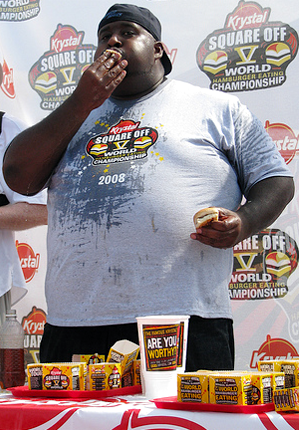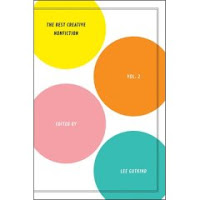I was pretty happy when I found these two pieces. We start off with Susan Orlean's "American Male Age 10" in which she offers us a thought provoking description of a 10 year old boy who lives in New Jersey. We'll round it off with a British broadcast about food in America.
These both take a close and descriptive look at everyday things we encounter. Our discussion and work with these pieces will be around the kinds of things each of these write choose to focus on, why they might have picked those items, and not others. We'll look at what kind of response that triggers in you and how their choice of adjectives evokes a reaction in the reader/listener.
We began reading it together in class and had some great discussion about what thoughts it brought up for some of the people in class.
Here's the story:
"American Male Age Ten" by Susan Orlean Here's what I would like you to do with it:
Here's what I would like you to do with it:1. Read the story all the way through.
2. Go back and look at the topics presented in each paragraph. Pick out 10 categories of things about Colin that are described in the story. Make a chart that lists these categories (items such as what he looks like, what he expects adult life will be like, what he loves, etc.) down the left hand side of the paper. Put a column next to that and fill in the information for Colin. Then add another column and fill in the information about yourself. Try to answer it as much as you can from you at ten year old perspective. It should look something like this:
Category/Topic................Colin, 10.....................You
What he looks like............4"8' 75 pounds,
..............................handsome dark,
..............................smiley eyes,
..............................always wears a baseball cap
3. Now, take a closer look at Ms. Orlean's writing style. Make a list of at least 8 things that you notice.
4. Look at the section where she begins to write a dialogue between Colin and herself. She intersperses dialogue with descriptive paragraphs. Why do you think she writes this way? What is your response to it? What do you think is her intended impact on the reader?
5. Think about a scenario of some ordinary event that you remember of some similar time period in your life. Write about it using a style similar to Mrs. Orlean's style.
6. Why do you think Ms. Orlean writes out a conversation about the things he likes? What kinds of things are there on that list? What would have been on your list?
7. Towards the end of the writing she goes into great detail describing Colin's thinking about money. What might be the purpose of this focus? Why do you think this was described in such detail, while other things were merely mentioned?
8. Do you think Colin is an average American male at age 10? If so, why? If not, why?
9. If Ms. Orlean had written about you, what kinds of details concerning your life do you think she would find interesting and write about?
10. What are the strengths of this story?
11. Do you recommend that I keep this story in my collection for next year's class? Why or why not? Please make your thinking clear to me so that I can take it into consideration next year - Thanks!
12. Turn this in, making sure to include your name and "American Male Age 10" at the top of the paper.
---------
I'd like to now turn your ear to an intersting broadcast put out by the BBC. It is a popular culture piece by Simon Schama.

Here's the link. You'll need about 11-12 minutes to listen to it.
Simon Schama on American Food from the BBC.(11 minutes, including the BBC ad at the beginning.)
Simon Schama on American FoodListen:Listen now (10 minutes)
Synopsis Simon Schama reflects on the quality of American food and eating habits and welcomes what he sees as the growing popularity of ethnic dishes and local farm produce. Excellent fresh food and good cooking has always existed, he says, in hidden pockets of the countryside but now he sees it being bought and enjoyed by more city dwellers, too.
Here's our activity with this piece:
1. Before we begin listening to this podcast, I'd like you to write about how you see American food. Give a brief response to the following types of American food:
Airport food
Fast Food
Food from Small/Family Owned Restuarants
Ethnic Food (Mexican, Chinese, Russian, Hmong, Vietnamese, etc.)
2. Mr. Schama states that Americans are not "so much in search of food, as fuel." What do you think this means?
3. He goes on to describe Americans as focused on the "speed of eating [and so much] brutal chewing... Most American eating seemed swift and silent...befitted a bodily function" instead of the social occasion as it is for the British. What is your reaction to such a description?
4. Schama shifts from such unpleasantries to describe pies in mouthwatering detail many pies. Why do you think he waxes poetically about the pie and the people who eat it?
5. Mr. Schama goes back and forth between negative descriptions of "waterly Cesar Salad with cardboard croutons..." and "places where you'll find that Real McCoy". Do you think this kind of contrast is due to a personal bias on the part of Mr. Schama, or is it an accurate description of the foods or is it an unfair comparision between fast food and finer dinning? Could it be a combination of all of those factors? Write out your thougths on this contrast and transition.
6. About 7 minutes into the recording Mr. Schama describes his experience of getting some barbequed chicken from a local "hole in the wall" restuarant. He goes on to describe the experience and the reaction of others. Try your hand and describing some meal that you have enjoyed.
7. Next up is a description of ethnic food. You can tell by what he shares with us that he is not in Colorado, but back East. What do you think he would descripe if he were here? What kinds of ethnic food would he find here?
8. What do you think he means by "agribusiness"? (9.10+)
9. If Mr. Schama were to come and spend some time with you, asking you to show him American food in Colorado, where would you take him (assuming you did not have to worry about the cost of the adventure or the time to travel to the places you desired)? Pick at least five places you would take them? Explain why you picked each of the places and what each one represents.
10. What did you think about this podcast? Should I keep it for next year?
(If you liked this kind of podcast you can find a bigger variety of them by looking up "Society & Culture: Personal Journals" on Itunes.com. You might find "This College Life" to be interesting, too)If you are accessing this from a computer at school you can listen to it using Windows Media Player. You find it on the "S:" drive in the Student Shared folder>teacher folder>Language Arts> Welshon PoV_ with Simon Schama 16th
---------------------------------------------------------------------------------

Next up is a unusual piece that is really quite interesting. It is "Beyond the Black Box" from Stiff: The Curious Life of the Human Cadaver by Mary Roach. I don't have an electronic entry for this piece. You'll have to come to class to read it.
We've looked at it from a reader's point of view. Now I want you to shift your perspective and look at it from a critical angle. Here's what I'd like you to do:
Put yourself in the teacher's shoes and develop a learning activity to go with this reading. Please create about 10-12 questions and/or activities that are designed to help the reader comprehend the text better. You'll need items that address:
* Comprehension of key points in the text;
* A consideration of the craft of writing;
* Items that are designed to help the reader clarify confusing or complex parts of the text.











